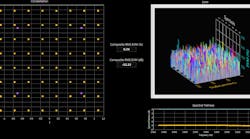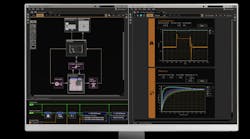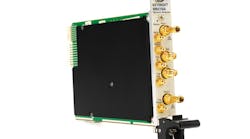Lab Validation Setup Aids in Characterizing RF Power Amplifiers
With frequencies for wireless communications moving higher—the 5G FR2 bands, for example—the characterization of RF power amplifiers (PAs) becomes more important than ever. If an RF power amplifier isn’t properly characterized, a host of system parameters are put at risk. Transmission quality, battery life, system reliability, and the error-vector magnitude (EVM) specs—the latter being so critical for complex modulation schemes—will all suffer, perhaps catastrophically, if the RF PA’s performance parameters are misunderstood.
Fortunately, test-and-measurement vendors like Emerson NI continuously facilitate the process of characterizing an RF PA. We recently had a chance to see a demonstration of the company’s lab validation setup for digital predistortion (DPD). It serves as a validation bench for any engineer needing to evaluate and characterize an RF PA.
In the demo (see the video), the device under test (DUT) is a high-power gallium-nitride (GaN) PA that’s connected to NI’s PXI vector signal transceiver (VST). NI’s VSTs combine an RF and baseband vector signal analyzer and generator with a user-programmable FPGA and high-speed serial and parallel digital interfaces for real-time signal processing and control from baseband to mmWave.
The VST generates the RF waveform that’s input to the DUT. After taking some RF power measurements, the RF signal out of the PA is reacquired by the VST. Meanwhile, digital DUT control and power are provided by NI’s source measure units (SMUs).
All of the hardware is tied together by what NI calls its RFIC Test Soft Front Panel, an interactive GUI from which users can configure the instruments, including the VST. They can also configure waveform settings, execute DUT control, and apply DPD. The latter is a key element in RF PA characterization.
Emerson NI offers a selection of DPD models from which to begin characterization. Elements such as the lookup table, memory polynomial, and generalized memory polynomial are all in one place so that users can quickly visualize, compare, and contrast the effects of various DPD algorithms. The end effect is to make it much easier to configure, measure, and then analyze those results.
Also covered in the demonstration video is Emerson NI’s PXI-5633 S-parameter add-on module, which pairs with its PXI-5842 vector signal transceiver to conduct S-parameter measurements alongside modulated RF measurements.





